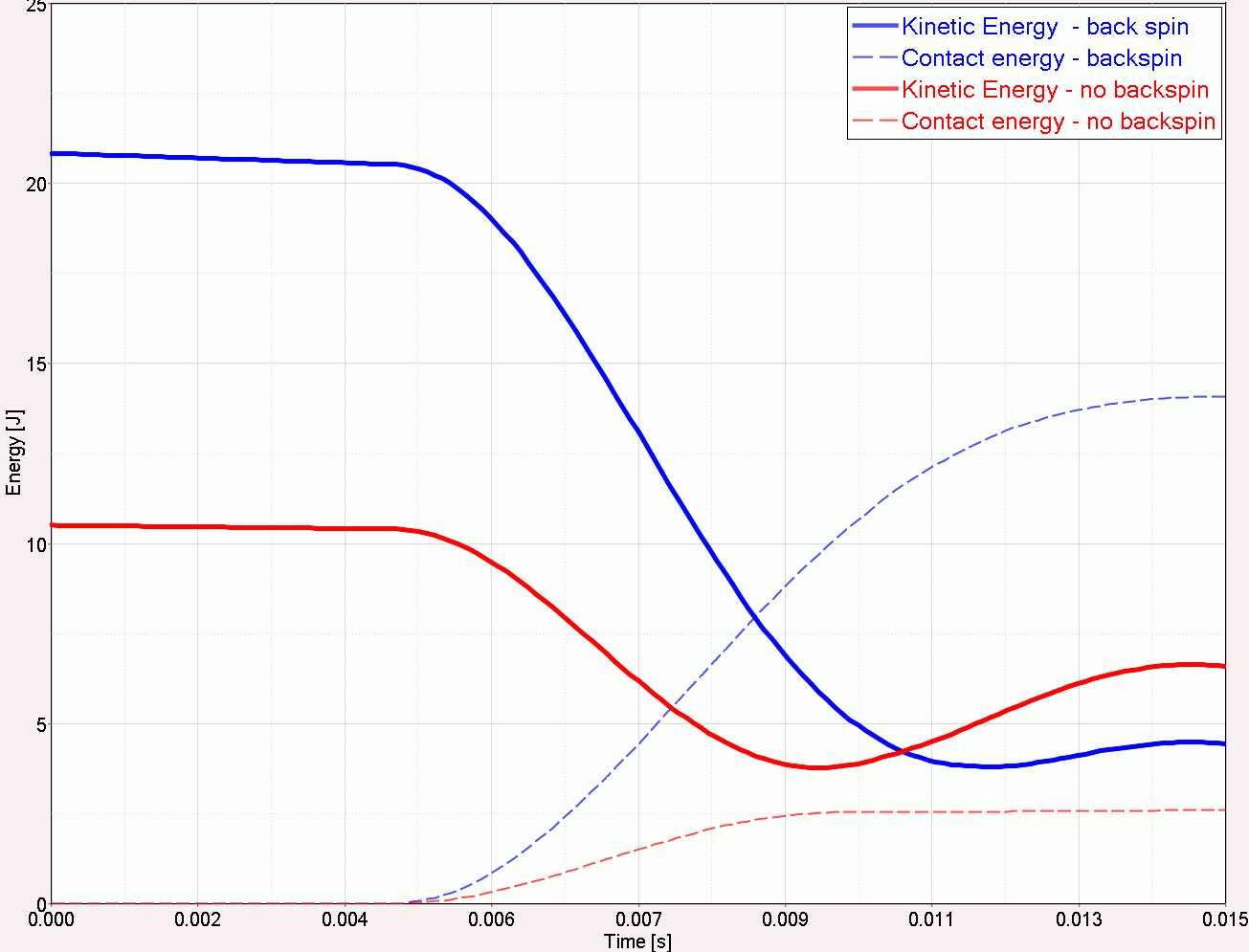Modeling March Madness Part 2: Spin vs. No Spin
The myth goes like this: A shot with no backspin will hit the rim and then tragically bounce away with no chance of going in. In contrast, the magic of spinning somehow slows the ball down during the impact(s) and thus increases the chances of scoring.
Now, is this true or just the mythology of “shooter’s touch”? Let’s find out!
The general problem with shots interacting with the rim is that most of the kinetic energy held by the incoming ball is conserved during a re-bounce and a lively rim re-bounce is statistically unfavorable. Unfortunately, you are not allowed to puncture the ball mid-shot, so what are your options? First of all, you probably want to minimize the kinetic energy of the incoming ball by choosing a trajectory with a low incoming velocity (around 45 degrees shooting angle).
Then you still have the rotational degrees of freedom left to play with. But why would you further increase the kinetic energy of the ball by adding rotation? It doesn’t make sense. Or does it?
Here is an experiment. Two free throws approach the basket and hit the rim at the exact same spot with identical translational velocities. The only difference is that one of the shots carries twice the kinetic energy - half of it in the form of backspin rotation.
While our simulation allowed both shots to go in, in one case there was an extra bounce off the backboard. Keep your eyes on the kinetic energy. Look at this plot, closing in on the rim impact:

So it’s not entirely about minimizing the energy of the throw. It’s more about minimizing kinetic energy after the first impact and that is a big difference. By adding backspin you can actually end up with less remaining kinetic energy after the first rim impact - 1/3 less in this example, thus significantly increasing your statistical chances. The losses that work for you in this case are due to frictional heat.
Conclusion? Adding some backspin is a good way to dampen a potential first bounce on the rim. The shooter’s touch has a physical explanation!
Anyone interested in making some shots? Go ahead and download the RADIOSS model here. Perhaps you are eager to maximize your free throw chances? Use HyperStudy to explore the statistical sweet spot in terms of angle, backspin, and aiming.
Or try to set a record in number of rim & backboard impacts (it took some practice to reach 9 in the last blog).
Now, is this true or just the mythology of “shooter’s touch”? Let’s find out!
The general problem with shots interacting with the rim is that most of the kinetic energy held by the incoming ball is conserved during a re-bounce and a lively rim re-bounce is statistically unfavorable. Unfortunately, you are not allowed to puncture the ball mid-shot, so what are your options? First of all, you probably want to minimize the kinetic energy of the incoming ball by choosing a trajectory with a low incoming velocity (around 45 degrees shooting angle).
Then you still have the rotational degrees of freedom left to play with. But why would you further increase the kinetic energy of the ball by adding rotation? It doesn’t make sense. Or does it?
Here is an experiment. Two free throws approach the basket and hit the rim at the exact same spot with identical translational velocities. The only difference is that one of the shots carries twice the kinetic energy - half of it in the form of backspin rotation.
While our simulation allowed both shots to go in, in one case there was an extra bounce off the backboard. Keep your eyes on the kinetic energy. Look at this plot, closing in on the rim impact:

So it’s not entirely about minimizing the energy of the throw. It’s more about minimizing kinetic energy after the first impact and that is a big difference. By adding backspin you can actually end up with less remaining kinetic energy after the first rim impact - 1/3 less in this example, thus significantly increasing your statistical chances. The losses that work for you in this case are due to frictional heat.
Conclusion? Adding some backspin is a good way to dampen a potential first bounce on the rim. The shooter’s touch has a physical explanation!
Anyone interested in making some shots? Go ahead and download the RADIOSS model here. Perhaps you are eager to maximize your free throw chances? Use HyperStudy to explore the statistical sweet spot in terms of angle, backspin, and aiming.
Or try to set a record in number of rim & backboard impacts (it took some practice to reach 9 in the last blog).




